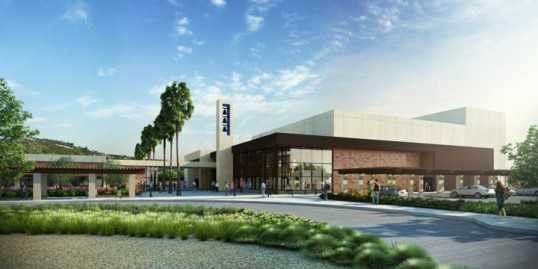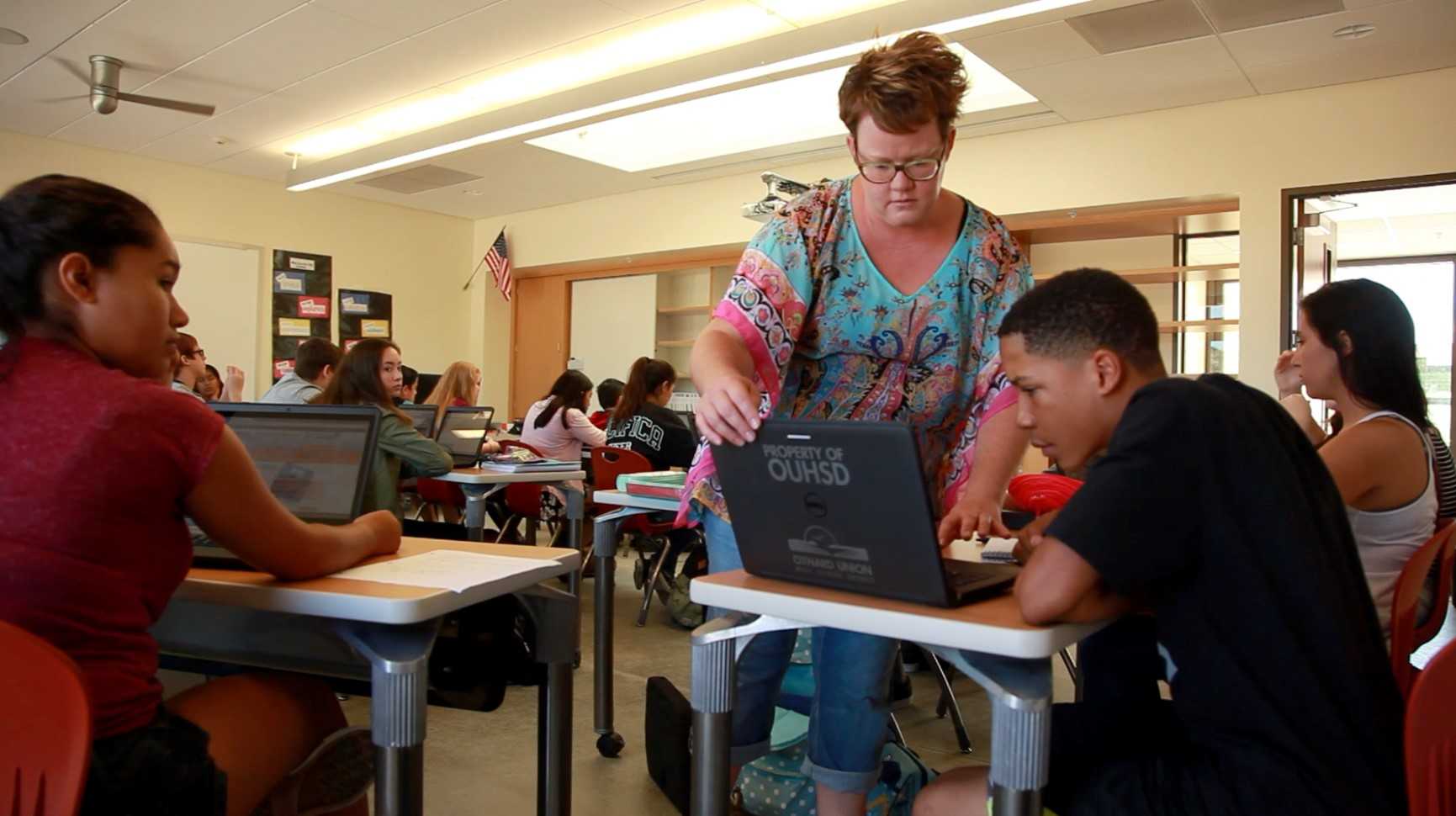A career academy high school puts 21st century skills to the test with on-the-job training

North of Los Angeles, not far from the city of Ventura, the brand new Rancho Campana High School sits on a California campus fit for the set of a teen movie, where spacious, airy classrooms open — via retractable glass-paneled garage doors — onto sun soaked courtyards and outdoor learning spaces with sweeping views of the neighboring Camarillo Hills. It’s a place where all the furniture is on casters, to be reconfigured with ease, and where every building boasts a computer lab and a media commons.
If the $77 million campus, completed earlier this summer, is stunning, it’s nothing compared to what’s going on inside. Following a novel college and career readiness model, Rancho Campana divides itself into separate learning academies, designed to immerse students in one of three distinct career fields: arts and entertainment, health services, and applied engineering.
The school is obviously the newest showpiece of the Oxnard Union High School District, but it’s also of a continuation of the work began four years ago by then-newly arrived superintendent Dr. Gabe Soumakian, who has always cast an eye toward the future. “When I got here in 2011, that was one of my first projects,” Soumakian said. “To really think about the learning space that we were going to create, and the tools and resources we’d need.”
Next page: Why the model works
The transition to Common Core over the past few years has put a much greater emphasis on college and career readiness for districts like OUHSD. And to Soumakian, it’s not enough to prepare students for just one or the other. Instead, students students should be preparing for both higher education and the skill sets that will see them through to graduation or their eventual careers. Even at the high school level, students can experiment with career options that seem appealing while ramping up the rigor in their terms of coursework and gaining on-the-job training.
OUHSD is part of a network of districts all over the state invested in raising the stakes in preparing students for life after high school. Thanks to $250 million worth of competitive grants offered by the state of California, many of the districts have started coordinated programs, called career pathways, leaning heavily on the Linked Learning approach, which combines a student’s academic courseload to their career interests and eventual real-world work experiences, such as job shadowing or internships.
But whereas a career pathway program might only require a student to take a single engineering class each year in addition to her local internship, OUHSD’s academies are so specifically designed that every course an engineering-focused student takes is aware of her career interests and experience. Thus, her English class might emphasize more technical writing, while her art class might challenge her physical modeling and design skills. The distinct academy model has been around OUHSD since 2007, but has recently exploded into more than 20 academies scattered in high schools throughout the district, from culinary arts to aviation and marine science.
All this, of course, requires a specially-trained teacher workforce, comfortable with concepts such as project-based learning in addition to the subjects they teach. The faculty at Rancho Campana is small — about 13 full time teachers — but many have advanced degrees and relevant work experience in their field. “We’ve been very fortunate to have teachers who want to do this,” Soumakian said. “We have trained a lot of our teachers with the Buck Institute and we do a tremendous amount of PD. You can’t just have teachers teach the same way they always have and get results.”
Much like college, academy students are free to move around between programs in their first two years of high school, but after that, they’re generally locked into a program. Part of the reason for that is students in some academies need time to complete safety training courses or other prerequisites in order to land the most hands-on internships. But it’s also intended to get students to fully commit to something to build up their perseverance and see whether or not it suits them. There’s no explicit expectation that the engineering or medical academy graduate will go on to pursue careers in those specific fields.
“It’s not a bad thing that students are thinking about their careers earlier and earlier,” said Christopher Cabaldon, the president of the Linked Learning Alliance, at a recent event celebrating the opening of Rancho Campana. “Parents don’t want their kids think about it until college, but they may whether we like it or not.” At least this way, Cabaldon said, they’ll have a head start in exploring their interests and picking up broad career skills along the way.
The district maintains partnerships with local hospitals and businesses for internship placement, but mainly district students use an online placement platform called LaunchPath, which works with employers and Linked Learning schools in California. The tool prompts students to create an online profile similar to a C.V. with their interests, relevant coursework, and skills, and then uses an algorithm to match them with a local employer looking for students with similar skills.
The splashy new campus and radical learning model are certainly not going unnoticed, but it’s perhaps the investment in teacher training may be what’s most apparent to students. Reanna Norman, a tenth-grade student, already president of her school’s Associated Student Body, gushed about the “amazing opportunity” her school provides, and the way technology is seamlessly incorporated into lessons. Though she reserved her biggest praise for her teachers. “I’ve never been as interested in school,” she said. “It’s because of the teachers. They’re really there to help you.”
- TC- What student choice and agency actually looks like - November 15, 2016
- What student choice and agency actually looks like - November 14, 2016
- App of the Week: Science sensor meets your smartphone - November 14, 2016


